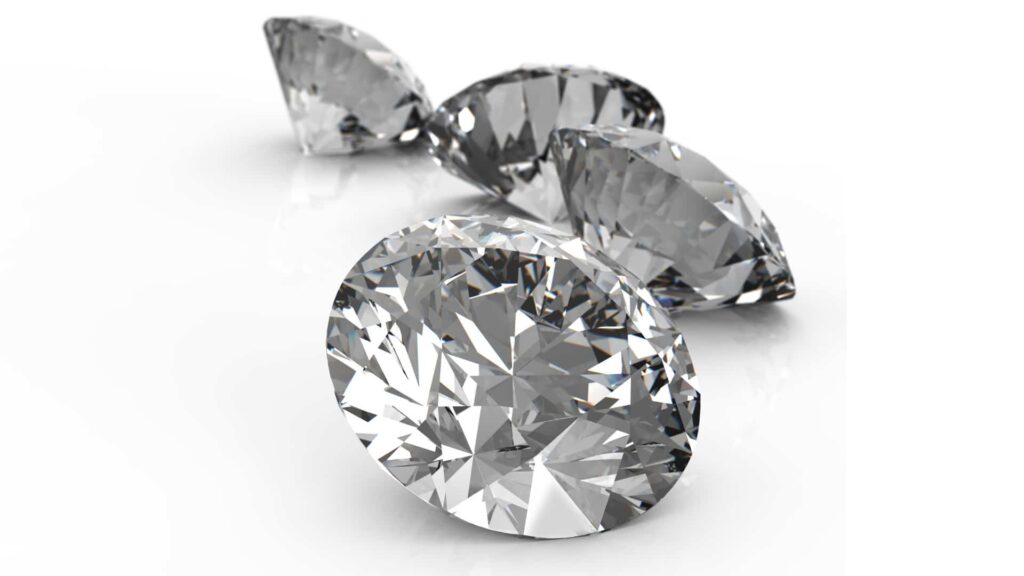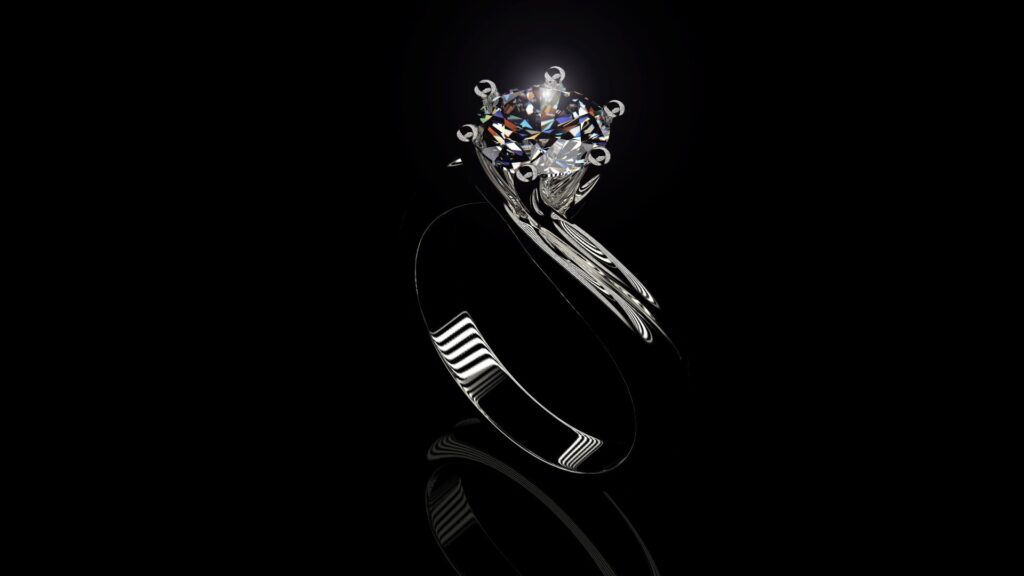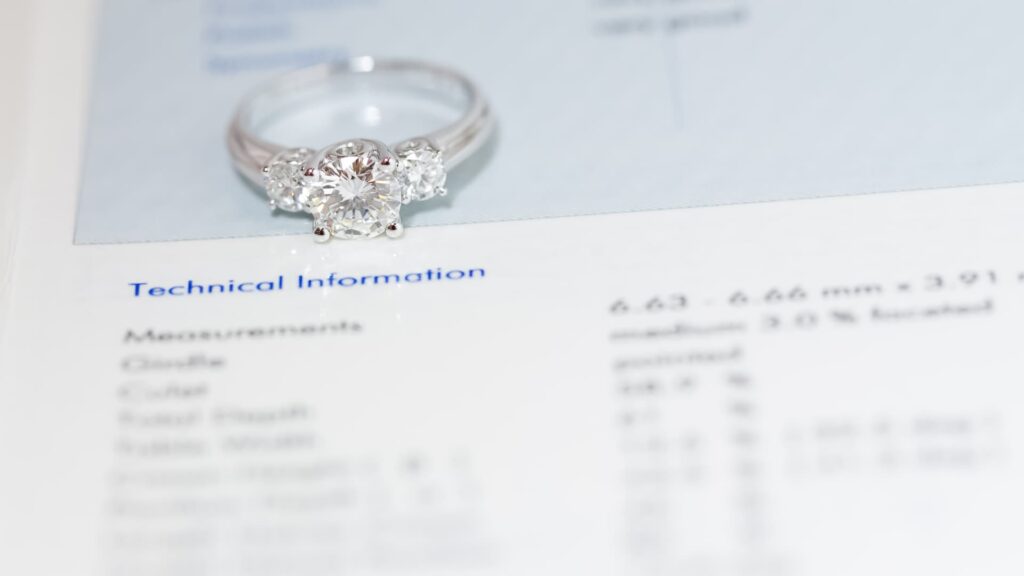Diamonds are a sign of timelessness and prestige. Many of us might like to own or wear a diamond at some point in our lives but may not be able to afford it.
For those on a budget, I can help get you acquainted with a gem that one might mistake for a diamond. I am talking about cubic zirconia – beautiful, and affordable.
The similarity between a diamond and cubic zirconia is so uncanny that if you are not trained to tell the difference between the two, you might easily mistake one for the other. However, there are subtle differences in dispersions, shine, brightness, color, clarity, and many other things that set the two apart.
This article is an essential guide for those who want to understand the differences between diamonds and zirkonia – and why one is so expensive and the other is not. Read on!

Things You Didn’t Know About Diamonds
There is one thing that most of us know about the diamond – it is the hardest substance on Earth. It can accentuate the beauty of every person who wears it, and its shine is a sheer treat to the eyes of the beholder. It is also one of the most precious stones in the world and is identified with luxury.
Have you ever wondered where precisely this stunning stone comes from? Allow us to brief you on this rare gem. There are typically two types of diamond: mined and artificial.
Mined diamonds
The diamonds mined from the Earth’s center are known as natural diamonds. These diamonds are created deep in the Earth and get to the surface via volcanic eruptions. They carry carbon atoms aligned in such a way that makes them super hard.
Artificial or lab-produced diamonds
Artificial or lab-produced diamonds result from the amalgamation of carbon and molten iron put under a lot of heat and pressure. These make for beautiful earrings, rings, and other pieces of jewelry. However, they do not match the value of mined diamonds.
How To Spot The Difference Between Diamond And Cubic Zirkonia
There are some characteristics of a diamond that can help you identify an authentic diamond.
- The reflection of the gemstone is grayish, though you can also see more colors. If you see more colors with gray, chances are that the diamond is natural. If it is too white or shiny, it’s likely a fake.
- Place your diamond on a newspaper, book, or notes, and try to read through it; if you can, this diamond is likely a fake. However, if you cannot read the words, you have a natural diamond in your hands.
- Breathe deeply on the diamond. The diamond is genuine and authentic if you do not find any vapors on the stone.
- This one is probably the easiest way to spot fake diamonds. When you use a diamond as a piece of jewelry, like a ring, for example, you should check if the gemstone is attached to another precious material, such as gold or platinum. If the band is made from precious metals, the chances are that the piece is authentic. A real diamond will never be set in cheaper stuff.
- Lastly, take the advice of a professional by getting the stone checked. They can give you the exact value and authenticity of the diamond.
A Brief Introduction To The Humble Cubic Zirconia
Cubic Zirconia looks quite similar to a diamond but isn’t the same. It is an artificial stone that appears like a diamond and thus, can be used in accentuating the beauty of jewelry.
Cubic Zirconia, also known as CZ, is found in nature as well, but in small amounts. In the 70s, scientists found ways to make this stone in the lab, and since then, it has been mass-produced for use by consumers who are looking for a cheaper alternative to diamonds.
It is a synthetic gem, and while it is not even close to a diamond when it comes to hardness, it is quite a hard gem and carries the same shine and luster, which is what makes it such a great imitation for stones in jewelry.
The hardness in CZ comes from diamonds used during the production process, but it cannot match the natural strength of a mined diamond that has been put under tremendous heat and pressure.
So, where does Cubic Zirconia come from?
Let’s talk about its origin.
Zirconium oxide is a white crystalline powder. The crystals that come out when you heat this powder are polished and become Cubic Zirconia. It was initially created for industrial use, but once the manufacturers noticed its hardness (with a Mohs score of somewhere between 8 and 8.5) and clear and colorless cuts, they decided to take advantage of the stone and used it in the production of jewelry as well.
Even though Cubic Zirconias look incredibly similar to diamonds, they are far less expensive to buy. Cubic Zirconias are widely produced and used in the artificial and imitation jewelry business.
Now let’s come to the reason we are all here: the differences between these two gemstones.
Signs That Mark The Difference Between Diamond And Cubic Zirconia
1. Origin
Diamonds are mined from the Earth or created from carbon in the lab, whereas Cubic Zirconia is made from zirconium oxide.
Natural diamonds are found in the mantle, the outer layer of the Earth’s crust. They rise to the mantle through volcanic eruptions and tectonic activity and are mined at the Earth’s surface.
These diamonds are then taken to a lab and heated until they turn colorless, complex, and sharp enough to cut glass. Apart from this natural process, diamonds can also be made in the lab by mixing molten iron and carbon and are popularly referred to as synthetic diamonds or lab-created diamonds.
Cubic Zirconia is also present in nature but not in huge amounts, and thus, it needs to be grown in a lab. However, this doesn’t mean that Zirconia is completely worthless – it has a quality, shape, and value of its own. It’s just that it is not nearly as valuable as a diamond.
2. Color
Diamonds are on a color scale from colorless to yellow. CZ’s are typically completely colorless.
Natural diamonds fall on a color scale that varies from completely colorless to tints of yellowishness to complete yellow.
The color of a diamond is graded on a scale that ranges from D to Z, in which D-colored is considered the rarest and completely colorless. Z-colored diamonds are completely yellow. The D-colored diamonds cost significantly more than those falling in other ranges. Therefore, Z-colored diamonds cost the least compared to D-colored stones.
The below table explains the color scale of a diamond:
| Grade | Color |
| D/E/F | Colorless |
| G/H/I/J | Near Colorless |
| K/L/M | Faint |
| N/O/P/Q/R | Very Light |
| S/T/U/V/W/X/Y/Z | Light |
Related article: D vs. F Color Diamond
Cubic Zirconia is lab-grown, and thus, its color can be controlled by experts. As a result, they are usually made colorless. Therefore, CZs are akin to the D-colored diamonds on the grading scale.
However, there is something known as too perfect, usually which is where CZs get beaten out – completely colorless diamonds are extremely rare and expensive – so if someone shows you one and offers a great discount, make a beeline for the doorway because it’s likely CZ, not a diamond!
Cubic Zirconias are also available in different shades such as red, yellow, pink, and blue, and these shades are quite affordable.
3. Durability
Diamonds are the hardest substance on Earth; Cubic Zirconia is less but still fairly hard.
You have likely heard the famous phrase ‘diamonds are forever’ introduced during an ad campaign for the South-African diamond brand DeBeers. Well, it does full justice to the precious gemstone that scores a ten on the Mohs scale of hardness.
Diamonds are undoubtedly the hardest natural substance in the world and do not get scratched, broken, or chipped easily. Thus, it is pretty easy to maintain them and doesn’t require much care and attention.
On the other hand, Cubic Zirconia is also quite a hard substance, though not up to the standards set by a glittering diamond. They rate 8-8.5 on the Mohs scale and thus, can be more easily chipped, scratched, or damaged.
Compared to a diamond, you will need to take better care of Zirconia, or they may get damaged even while doing household chores. Thus, you should remove your ring, earring, necklace, or any other piece of jewelry before bathing, washing hands, cleaning, playing, or doing any other work that can scratch your Zirconia.
The Mohs Scale: hardness of a gemstone
Gemstones are often given a grade on the Mohs scale. This scale from 1 to 10 indicates the hardness of rocks. The 10 represents the hardest rock, the 1 the softest rock.
Here are a few examples of rocks and their corresponding grade on the Mohs scale:
10 = Diamond
9 = Corundum (including Sapphire and Ruby)
8 = Topaz
7 = Quartz (including Rock-Crystal, Amethyst, Pink Quartz, Smoky Quartz, Agate, Jasper, Onyx, Chalcedony and Citrine)
6 = Orthoclase
5 = Apatite
4 = Fluorite
3 = Calcite
2 = Gypsum
1 = Talc
4. Flaws
Ironically, naturally occurring diamonds are more flawed than lab-grown Cubic Zirconia, even though they carry more value.
Cubic Zirconia has excellent clarity and is quite flawless in appearance. In contrast, diamonds are almost always flawed – they come in different grades of clarity that can be scaled between Flawless (FL) to Included (I1, I2, I3). The below table shows the clarity scale on which GIA rates diamonds:
| Grade | Code | Description |
| Flawless | FL | No blemishes/inclusions |
| Internally Flawless | IF | No inclusions |
| Very, Very Slightly Included | VVS1/VVS2 | Inclusions, but difficult to judge even for a skilled grader |
| Very Slightly Included | VS1, VS2 | Minor inclusions |
| Slightly Included | SI1/SI2 | Noticeable inclusions |
| Included | I1/I2/I3 | Obvious inclusions |
Related article: SI vs VVS Diamond Clarity Compared
Even though flawless diamonds are most in-demand and expensive, it is essential to know that almost every diamond has some form of inclusion. Experts estimate that only 0.5% of all diamonds are Flawless or Internally Flawless.
Most jewelers use clarity to distinguish between diamonds and Cubic Zirconia. Remember that Zirconia will always look flawless with zero spots, but even flawless diamonds will carry some inclusions in the form of tiny dots, and this can also help you differentiate between the two gems.
5. Density
CZ has twice the density of diamond. A 1 carat CZ is smaller than a 1 carat diamond.
The density of cubic Zirconia is higher than that of a diamond, which means that the former is heavier than the latter. To put it another way, the carat weight of the two will not be the same even though the stones are of the same size.
So, if you are buying 1 carat of Zirconia, it will be slightly smaller than 1 carat of diamond, and this is how you will be able to tell the difference between the two.
6. Dispersion
Diamonds do not split light falling on them; they concentrate it into a single beam of white color. CZ’s create a rainbow effect.
For those confused about the term ‘dispersion,’ it is the way light breaks down into several spectrums of colors when it hits an object.
Diamonds have a dispersion rate of 0.044. When a diamond disperses light, it is a sight to behold – its sparkle is mesmerizing. However, the light will be bright white.
Cubic Zirconia has a dispersion of 0.066, which means that it has higher dispersion than diamonds. Cubic Zirconia splits light better, allowing you to see a rainbow pattern instead of a single beam of white light.
This rainbow effect has its own fan following – some people buy Cubic Zirconia specifically for this effect.
7. Shine
Diamonds shine brighter than Cubic Zirconia.
The technical word for shine is refractive index (RI), which indicates how brilliant or bright the stones are: how the light is reflected off the stone.
We all know how brilliantly diamonds shine – there is no argument that its refractive index is higher than any other precious stone in the world, except for Moissanite. Diamonds have a refractive index of 2.42, higher than Zirconia, at 2.16.
If you are worried about the sparkle of Zirconia, then let us make it clear that it has its own shine as well. Still, it’s just that cubic Zirconia doesn’t hold as much light as diamond does, and thus, the latter has a better shine.
8. Price
Indisputably, carat for carat, diamonds are much more expensive.
The easiest way to differentiate between Zirconia and diamond is to check their price value at the time of the purchase. As we can all guess, Cubic Zirconia is far more affordable than a diamond.
The price value of 1 carat of a diamond usually starts from $10,000, whereas Zirconia at the same carat can be bought at just $20!
Final Thoughts
The truth is that diamonds cannot be and can never be compared to cubic Zirconia. Diamonds are more precious than any other stone in the world, and they rightfully deserve to be, considering their origin, texture, and brilliance.
However, not everyone can afford diamonds, and thus, Cubic Zirconia is a great option to allow one to spend fewer bucks but simulate the experience of wearing a diamond. However, if you are looking for true luxury, timelessness, and prestige, there is nothing better than a brilliant diamond.
Related article: How Can You Tell Someone’s Ring Size?






